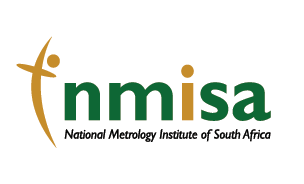Measurements of mass are central to the manufacturing of high-quality goods and services, mining, pharmaceutical and the construction of infrastructure. The laboratory is the source of measurement traceability for mass, volume, density, measurements for South Africa, and the region. Our main responsibility is to ensure that the above metrology parameters are scientifically valid and are internationally comparable.
Mass Mass is defined, scientifically, as the amount of matter an object contains. It is measured in kilogram (kg), other common units are gram (g), microgram (µg), milligram (mg) and tonne (t).
The mass laboratory provides traceability to Southern African industry which ensures that mass measurements performed locally are internationally comparable. We collaborate with international National Metrology Institutes and other organisation to ensure our measurements are of the highest standards possible. The laboratory is South African National Accreditation System (SANAS) accredited to ISO/IEC 17025.
How we can help
We provide technical solutions in mass, small volume and density measurements. Our personnel are regarded as experts in mass and small volume measurements and are contracted through SANAS and SADCAS as Technical Assessors for calibration program.
The laboratory plays a pivotal role in the development of metrology in SADC and Africa through participation in SADCMET and AFRIMETS activities. We offer training in mass and small volume metrology (gravimetric method) to individuals or to a group.
Training
Typical training is normally tailored to meet customer’s needs.
- Calibration of mass pieces using substitution methods Including: handling and use of weights, air buoyancy corrections
- Calibration of weighing instruments
- Calibration of volume measures using gravimetric method
- Basics in understanding measurements uncertainties related mass and volume.
Calibration Services
Accurate measurements are critical in numerous applications such as in health, construction, manufacturing, automotive, food & feed and compliance to safety requirements etc. We offer the following to Southern African industry and the region:
- Calibration of standards weights of OIML class E, F and M up to 1 000 kg
- Calibration of weighing instruments
- Calibration of volume measures using gravimetric method
- Density of solids and liquids
- Hydrometer calibration using Cuckow’s method
- Surface and interfacial tension of liquids measurements
- Consultancy and hands-on practical training in mass, and small volume metrology
Development of National Measurement Standards
We collaborate with international NMI’s to ensure our measurements are of the highest standards possible.
Watt (Kibble) Balance
The Kilogram, which was the last SI base unit that was defined in terms of a physical artefact (international prototype of the kilogram), has been redefined in terms of a fundamental constant (Planck’s constant, h). The new definition, which officially came into effect on 20 May 2019, means that the National Metrology Institutes can then realize the mass unit (kilogram) independently with the appropriate equipment e.g., Watt (Kibble) balance. The new definition guarantees future stability of the kilogram. NMISA has embarked on a collaborative project with NPL (UK) to develop and construct a Kibble balance which will be the primary standard for the mass in South Africa.
Weighing in vacuum
The realization of the kilogram through the kibble balance will be carried out in vacuum. This contrasts with the existing kilogram artefact which is stored and used in air. To align the dissemination with the realization of mass and eliminate air buoyancy challenges, weighing in vacuum is needed. NMISA is therefore investigating vacuum technology in mass to ensure accurate vacuum to air transfer and therefore accurate dissemination.
Hydrostatic weighing
For high accuracy weights (classes E1 and E2), OIML recommends that the volume/density of the weights be known in order to accurately correct for air buoyancy. The laboratory uses the automated volume comparator, which employs the hydrostatic weighing method, for accurate volume and density determination of weights ranging 1 g to 1 kg. A hydrostatic weighing project is currently ongoing at NMISA to extend this range from 1 kg to 20 kg and replace the pycnometer method. This will not only improve the accuracy of volume and density of weights above 1 kg but also the accuracy of mass measurements as a result of accurate buoyancy corrections.
